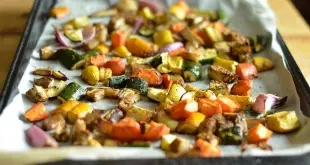This section is important, especially to those of you who have or are at risk for heart problems (dang, I sounded like a pharmaceutical commercial, didn’t I?).
Total fat is all the fat that is in the food: the good, the bad and the ugly. Let’s break that down a bit further, shall we:
- The Good: Unsaturated/Polyunsaturated/Monounsaturated fats (usually found in nuts, flaxseed, salmon, etc.)
- The Bad: Saturated fats (most red meats)
- The UGLY: Trans fats (a subset of saturated fats. Many “goodies” have trans fats, including cookies, cakes, fried foods, etc.)
Some food packaging will say “no trans fat!” That’s good. But is there a lot of saturated fat? You need to know that as well. I don’t have a handy calculation for fat, unfortunately. But here’s what I do:
- Obviously choose leaner cuts of meat and varieties of dairy. But remember: fat = flavor and for meats moisture. In lieu of choosing fat free anything (aside from milk) I go for a lower fat variety. (BONUS TIP: with ground meats, I often go for 2 parts super-lean meat to 1 part higher fat. Cuts down the total fat and gives you the flavor and moisture you want!)
- When choosing foods I know will have fat, I look to the source first. That means, I pick out things with nuts, seeds, healthy oils in them. That way I know they are likely higher in good fat than bad.
- Recognize that foods with trans fat are likely ones that should be in the “extreme moderation” category anyway. Still, if I am eating an “extreme moderation” item, I look for the brand with the least amount of total fat and preferrably no trans fat. Trans fat is mostly added to foods to give it more shelf stability. Which brings me to a handy tip.
- Any food that is solid at room temperature is usually a bad for you fat. Butter – bad for you fat. Lard – REALLY bad for you fat. Shortening – (although nothing makes a better biscuit) bad for you fat. Conversely, olive oil – good for you fat. Peanut butter – (mmmmm) good for you fat. The exception would things like salmon and flax seeds, both of which have healthy Omega-3 fatty acids (which are not listed on nutrition labels but are very good for you).
So we’ve already discussed the serving size and the calories. How does the fat play into the bigger picture?
Remember yesterday I told you that a gram of fat has 9 calories? That’s important information. Even though I find the math on nutrition labels generally correct, sometimes the food company’s math is a little wonky. And they don’t really expect you to notice because that label is just so unapproachable in so many ways.
So if you pick up a food item and it says it has 9g of total fat, that means that 81 calories come from fat. That should match the calories from fat number. If it does not, you need to pause. This has happened to me a couple of times and I usually just put the food product back. I don’t know WHY there is a discrepancy but there is and I don’t want to be the victim of it! You should especially pause if your quick calculation of the calories from fat is HIGHER than the calories from fat they list. That means they are probably not being forthcoming and the product isn’t as good for you as they’d like you to think.
If you feel especially passionate about integrity in food packaging you can call the company and tell them about their discrepancy. They may or may not act on that information. They most likely will try to ply you with coupons to get you to buy that very product that tried to deceive you.
There’s much more to know about fat and I’m currently writing the NEXT BF Basics series on it. But that should give you a good head start.
Tomorrow, we’re going to talk about sodium, a silent but lethal killer of promising food products!
 Bariatric Foodie Play with your food
Bariatric Foodie Play with your food



